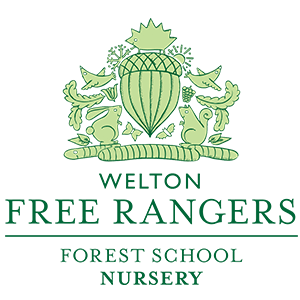The theme of last week has been developed from the previous week’s planning; where the children were magically turned into birds, and the children had to hunt for their food (Wiggly worms made from wool!) We decided that because the children engaged so well and were so interested in hunting around and exploring the natural objects, we would think about Birds Nests as we are in prime nest building time for the birds. We started off, as we usually do, by talking about our Forest School rules and why we have these rules in place. Most children are well rehearsed in our Forest School rules and enjoy recalling them.
As we had the Easter Forest School club also sharing our site, it meant we had to locate ourselves in the Paddock area, and if we were fortunate enough then we could relocate to the treehouse! When I introduced the theme of the session, the children commented on how they could see the friendly robins that frequently visit us or that they could hear the birds nearby. We thought about how big we thought a nest should be, where the best place would be to make a nest, what shape it could be etc. We also thought about the materials that the birds used to make their nests… some common suggestions were “Sticks” “Feathers” “Mud” “Hay” and “Flowers!”
After a good discussion and turning the children back into birds, we were off! Flapping our wings and tweeting loudly!
We spent a while foraging around for some building materials and looking for the ideal place to make a nest for the birds and their chicks. The children were a bit baffled when I commented on the fact that birds don’t have hands so how could they carry their materials!?
We are very lucky to have such lovely natural objects around our site at the time of year. The children foraged and found objects that they were excited about using to make their nests. By exploring the Forest School Site, children have an increased awareness of the world they live in and what is available to them. When they were ready to start making the nests, the children spoke about whether they wanted to work with someone or whether they wanted to work independently. (Because the term-time children were not in The Den this week the children were in much smaller groups than usual, around 3-4 children.) Most children decided to make a circular nest and worked together as one group although there were some children who made their own nest.
Some children decided to keep the materials how they had found them, whereas others decided they wanted to chop and change them slightly. The benefit of having such a small group is that we can do more tool work. The children are familiar with the Loppers and Secateurs. Therefore after a brief conversation about how we use the tools safely, the children could experiment with the size, shape and amount of materials they wanted to use for their nests. Using tools can be so beneficial for children if they are aware of how to use them safely and sensibly. And if that wasn’t enough then there were plenty of opportunities inside The Den, using our fine motor skills to pick up the spaghetti from the tough spot with some coloured tweezers, just like the children had practiced with the wiggly worms!
Thank you for reading!
Jess



